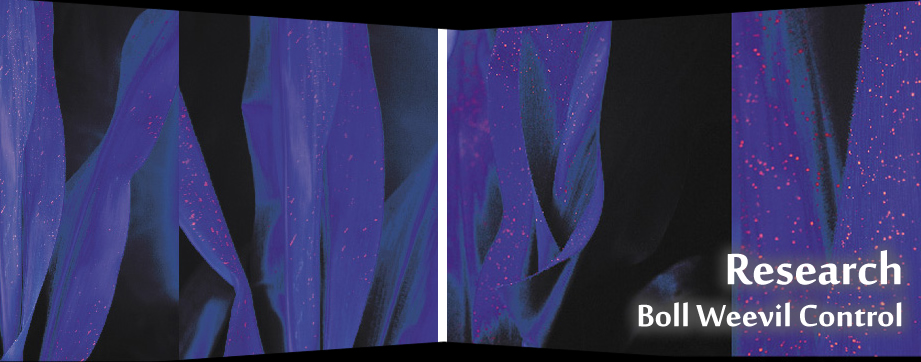AERIAL ELECTROSTATIC EC MALATHION 5 FOR BOLL WEEVIL CONTROL
I. W. Kirk, W. C. Hoffmann, and S. J. Harp
USDA, ARS, Areawide Pest Management Research College Station, TX
Summary
Electrostatic aerial spray systems offer potential for increased spray deposits and reduced spray drift from water-based spray mixes. This study was conducted to determine the feasibility of the electrostatic system for applying a water-based EC malathion spray mix as compared to the conventional ULV malathion sprays used in boll weevil eradication programs. Spray deposit results show similar deposits of malathion for both systems, but the electrostatic water-based sprays are not as persistent as the oil-based ULV sprays of malathion. The boll weevil bioassay results show higher weevil mortality from the electrostatic water-based sprays on the day of spray application but significantly lower weevil mortalities on days 3 and 6 after spray application. The fruit damage data show higher percentages of boll damage sustained with the electrostatic application. These results show some initial efficacy benefit for the electrostatic system, but more rapid degradation of malathion from the water-based spray offset the initial benefit as shown by the fruit damage data.
Acknowledgments
Appreciation is expressed to Stratta Brothers, Hearne, Texas, for cooperative use of commercial cotton fields for conducting this study. Appreciation is also expressed to Osama El-Lissy and Phil Hopkins, TBWEP, for providing the ULV malathion and to Weldon H. McFarland, Terra, for providing the EC malathion 5 for use in this study. Hal Tom piloted the aircraft. Phil Jank, Charlie Harris, and Carlos Garza processed samples.
Trade names are mentioned solely for the purpose of providing specific information. Mention of a trade name does not constitute a guarantee or warranty of the product by the U. S. Department of Agriculture or the National Cotton Council, and does not imply endorsement of the product over other products not mentioned.
References
Carlton, J. B. 1999. Technique to reduce chemical usage and concomittant drift from aerial sprays. US Patent No. 5,975,425.
Franz, E. 1993. Machine vision using image gradients for spray-deposit analysis: software development. Transactions of the ASAE 36(6):1955-1965.
Stermer, R. A., L. F. Bouse, J. B. Carlton, I. W. Kirk, and L. E. Bode. 1988. Comparison of various techniques for measuring spray deposition. ASAE Paper No. AA88-001. St. Joseph, MI: ASAE.
Return to Research Page |

